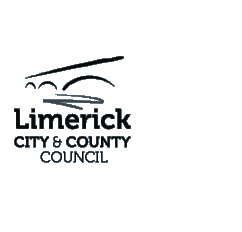“Their demise severed a vital link to a vibrant mercantile past”
Market houses were large, commercial buildings typically found at the centre of Irish towns and villages. Once the lifeblood of these communities, they formed part of the country’s economic warp, their position in the canon complemented by a rural structure of corn- exchanges, tholsels (where toll was paid on goods) and fair greens. Freestanding market houses were strategically placed on former medieval sites and in prominent positions on a central market space or a diamond (squares particular to northern counties). Often sited on axis with their civic and ecclesiastical counterparts, together they created a distinctive set- piece in the formally planned settlement. In rare instances, the market house was fully integrated into the streetscape or inhabited entire blocks, for example at Draperstown, Co. Derry, designed by W.J. Booth in the early nineteenth century.
The Irish market house has its origins in the Renaissance tradition and was typically arranged in a classical motif, with an arcaded ground floor and a fully enclosed upper level; their forms sometimes defined by lantern clock towers, reflecting the civic awareness of eighteenth-century developers. The ground floor was for storing, weighing and selling goods, while upper floors often doubled as space for administration and for court sessions. This dual function was not uniquely Irish and had its predecessor in thirteenth-century Europe, where the hybrid of town hall and market house was widespread. The open arcades provided a semi-public, semi-private space that allowed deals to be struck under arches and sales to spill out onto the streets. This arrangement was favoured by the Irish, who traditionally preferred to do business outdoors rather than within closed halls.
Eighteenth and early nineteenth-century models were financed by local landlords, serving to demonstrate their patronage, as well as expressing the country’s overall impetus for improvement during the Enlightenment. Materials ranged from coursed rubblestone to smooth renders and classicism pervaded even at the most modest of scales, like the reticent market house perfectly sited at the decumanus in Portarlington, Co. Laois; its over-scaled upper storey suggesting a grander function therein. Curvilinear gables hung with slate delineate the court rooms on the first floor of Kinsale’s market house in county Cork, while more sophisticated models are wrapped in fine ashlar stonework, such as the sublime cruciform market house with fluted granite dome in Dunlavin, Co. Wicklow and Ferdinando Stratford’s immense Market House, which lines one side of the market square in Newtownards, county Down. When grain became a significant Irish export, towards the end of the eighteenth century, a series of new prototypes emerged in a taut cortile arrangement, led by Francis Johnston’s corn market in Drogheda, Co. Louth.
Following the Act of Union between Great Britain and Ireland in 1800, the mercantile structure was reformed. With purchasing methods changing, and the growth of the retail trade, market administration was transferred to the local authorities. While new market houses continued to be constructed (albeit at a slower pace), their viability was challenged by the nascent hierarchy of department stores and covered market halls emerging in cities and larger towns. By the mid-1800s, many market houses were either adapted to other uses, or leased by local shopkeepers and spirit grocers. Some efforts to restore and refurbish followed in the twentieth century, but with their function almost entirely superseded by supermarket chains and co-operative livestock markets, the bulk of Ireland’s market houses fell into disrepair or were removed. Their demise severed a vital link to a vibrant mercantile past and fragmented the singular nature of the market spaces that once distinguished the country’s provincial countenance.
Livia Hurley is an architect and architectural historian in private practice, and she teaches at the School of Architecture, Planning and Environmental Policy, University College Dublin.






















